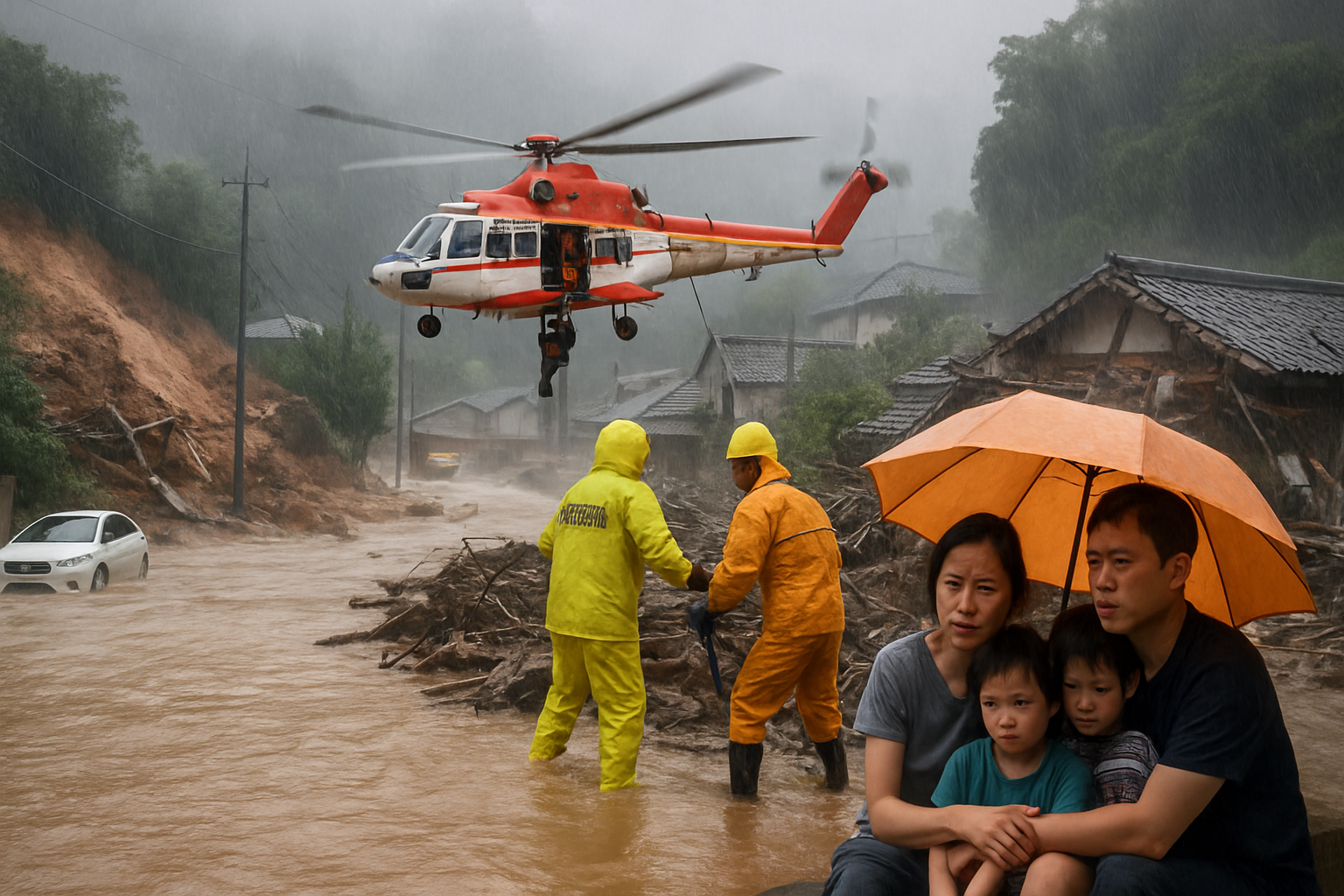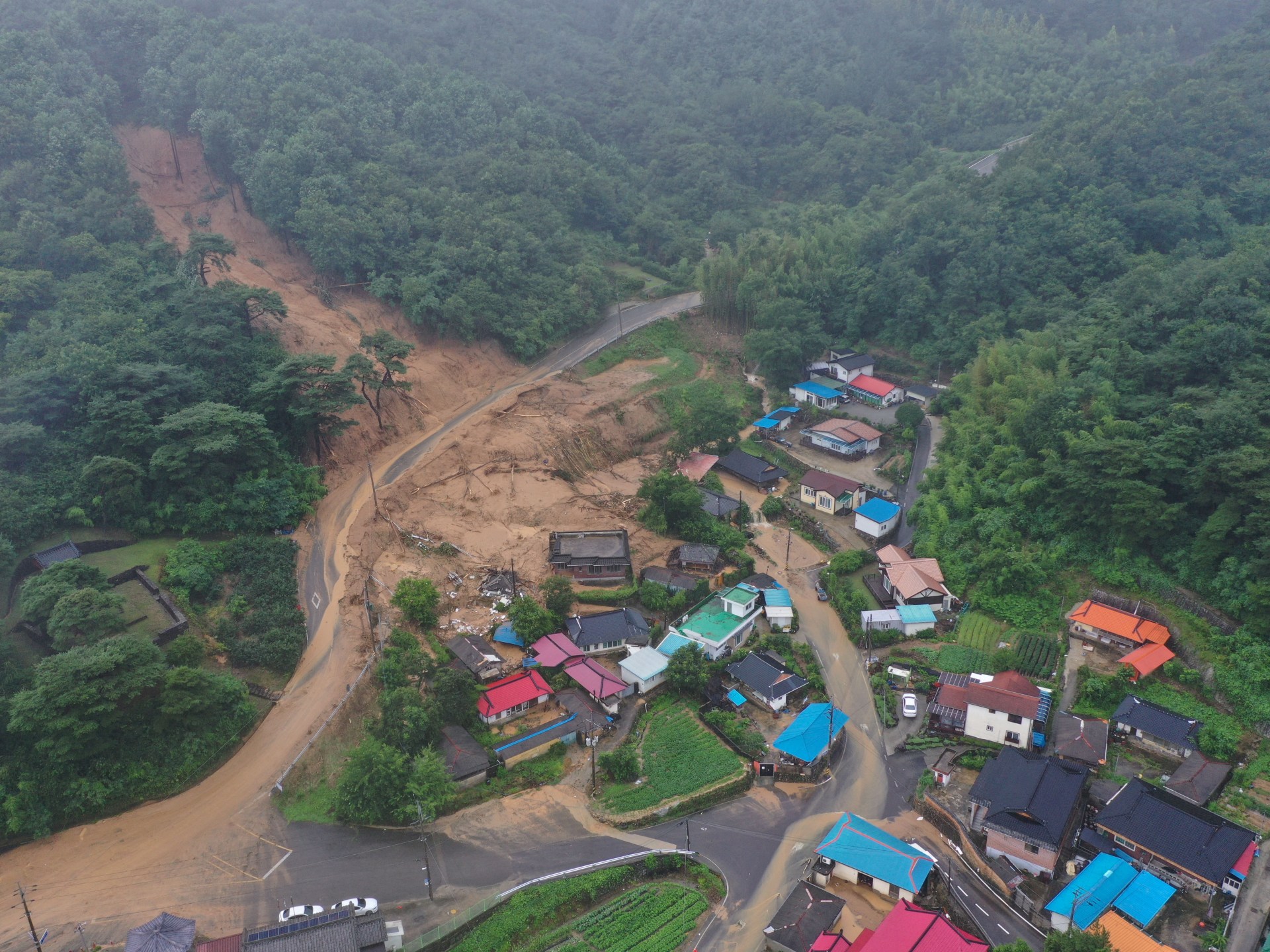Catastrophe Strikes in the Heart of Monsoon Season
South Korea is reeling in the aftermath of one of the deadliest bouts of flooding and landslides in recent memory. This tragic natural disaster, driven by days of torrential monsoon rains, has claimed the lives of at least 18 people, with dozens more injured or missing, and has displaced thousands of residents from their homes. As emergency crews mount extensive rescue and recovery operations, the full scale of the devastation unfolds across the country’s southern and central regions.

Record-Breaking Downpours
The deluge began around July 16, delivering extraordinary rainfall across several provinces. In Sancheong county — among the hardest hit — residents endured over 800mm (more than 31 inches) of rain within a single week, setting a new benchmark for precipitation intensity in the region. Other towns such as Gapyeong and Hadong, northeast of Seoul, also reported near-record rainfall: in Gapyeong alone, over 173mm (6.8 inches) fell in just 17 hours, surpassing historic daily records.
Deadly Consequences: Lives Lost and Homes Destroyed
The aftermath has been grim. Flash floods and mudslides swept away vehicles, homes, businesses, and agricultural land. In Sancheong, a mountain community near the central south coast, at least 10 fatalities have been confirmed, with four more individuals still unaccounted for. The disaster did not spare other regions: in Gapyeong, a landslide buried several homes, leaving multiple residents dead and others missing. Another victim was found near a bridge after being swept away by strong currents. In Gwangju, further south, the death toll continued to rise, with reports of houses collapsing and flash floods overwhelming entire neighborhoods.
Many survivors recounted harrowing escapes. One restaurant owner in Gapyeong described clinging to an iron pipe as floodwaters surged to neck height, barely managing to survive as his property was devastated. Families camping near streams during the peak summer vacation season were caught off-guard, with some swept away by sudden water surges, prompting risky rescue operations using ropes, zip lines, and helicopters.
Massive Displacement and Infrastructure Devastation
Across the affected areas, the prompt response of South Korea’s emergency services played a crucial role in rescue and recovery. As floodwaters inundated cities and towns:
- Over 12,000 residents sought temporary shelter in evacuation centers.
- More than 41,000 households faced nationwide power outages; public infrastructure such as roads, bridges, and railways suffered extensive damage.
- Widespread devastation affected strawberry greenhouses, farms, and livestock, undermining local economies in agricultural regions.
The Ministry of the Interior and Safety stated that upwards of 2,700 people remained displaced as of Sunday night, with volunteers, government workers, and even military personnel engaged in relief and clean-up efforts.
Government Mobilization and Disaster Response
In light of the widespread destruction, President Lee Jae Myung declared the hardest-hit regions “special disaster zones.” This designation allows for increased government financial aid to expedite restoration of public and private facilities, and provides relief for affected families through reductions in utility fees and deferred local tax payments.
South Korea’s central government, local municipalities, and private sector experts have formed a united front to assess damages, support evacuees, and rapidly deploy emergency supplies. The government pledged a thorough review of disaster preparedness in light of global climate change, which experts cite as a likely contributor to both the frequency and intensity of such extreme weather events.
The Human Toll and Looking Ahead
While the rainfall had largely subsided by July 21, the search for missing persons continues in muddy, unstable conditions. Eyewitness footage shows residents trudging through thick mud, their homes and livelihoods in ruins. There are fears the death toll may rise even further as emergency workers navigate dangerous debris fields and swollen rivers in search of survivors and the missing.
South Korea’s struggle underscores a sobering reality: as climate patterns shift unpredictably, even nations prepared for seasonal monsoons face mounting risks. For many communities, the recovery will take months, if not years—and for those who have lost loved ones, the scars may never heal.

